|
| |
|
8th International System-on-Chip
(SoC)
Conference, Exhibit & Workshops
November 3 & 4, 2010
—
Hilton Irvine/Orange County Airport, Southern California
SoC Conference Presenters'
Bios & Abstracts
|
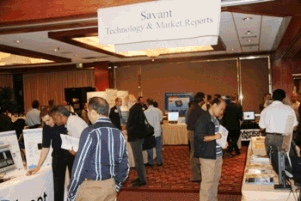 |
|
If you
have any questions or need more information, please contact:
SoC@SavantCompany.com
or
949-851-1714
Thank
you!
|
|
|
|
|
|
|
|
|
|
|
Day
One Nov. 3, 2010
SoC Conference Program Agenda* |
|
|
|
Savant
Company Inc. |
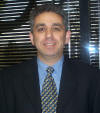 Farhad
Mafie, SoC Conference Chairman, President and CEO of Savant Company Inc. Farhad
Mafie, SoC Conference Chairman, President and CEO of Savant Company Inc.
"Welcome and Opening Remarks, Technology/Market Trends."
Farhad Mafie is President and
CEO of Savant Company Inc., a technology marketing company in Irvine, CA.
Savant specializes in marketing and sales of semiconductor IC/IP products,
SoC/ASIC services and solutions, as well as providing targeted technical-
and business-related training seminars and conferences globally. He has over
20 years of experience in semiconductor and computer businesses and more
than 10 years of university-level teaching experience. He is the former Vice
President of Marketing and Engineering at Toshiba Semiconductor. He has also
worked in strategic marketing, project and design engineering at Lucent
Technologies, Unisys, and MSI Data. Farhad has a Master of Science and a
Bachelor of Science degree in Electronic Engineering from California State
University, Fullerton. He is an author and a translator, and his articles
have been published in a variety of journals and Web-based magazines on
technology and political affairs. In 2003, he published the biography of
Iranian poet and Nobel nominee who lived in exile, Nader Naderpour
(1929-2000), Iranian Poet, Thinker, Patriot. Farhad is also Editor-in-Chief
for the CRC Press SoC Design and Technologies Book Series, which includes
(1) Low-Power NoC for High-Performance SoC Design and (2) Design of
Cost-Efficient Interconnect Processing Units. Farhad is an active member of
IEEE, and he is the chair of IEEE Orange County Solid-State Circuits Society
(SSCS), as well as IEEE Orange County Entrepreneurs' Network (OCEN). He is
also a member of two UCI Advisory Committees: Communication System
Engineering and Embedded System Engineering Certificate Programs.
|
|
|
|
|
More than Moore:
Emerging Trends & Challenges in Integration of RF & Analog/Mixed-Signal
(RF-AMS) Content into Low-Power SoC Platforms.
Track Chairman: Dr. Michael Green, Professor & Chair Department of
Electrical & Computer Engineering, UC Irvine.
|
|
|
|
S3 Group |
 Cormac
O’Sullivan, RF & Mixed Signal Engineering Team Lead. Cormac
O’Sullivan, RF & Mixed Signal Engineering Team Lead.
RF SoC Development Flow.
Abstract: In this presentation
the background and market conditions driving the increasing integration of
analog and mixed signal content will be briefly discussed. Featuring a case
study of a recent RF SoC completed by S3 Group, the system cost benefits
that can be achieved with aggressive integration of high performance RF,
analog, mixed-signal and digital content, will be outlined. S3 Group’s
accelerator platform leveraging proprietary system design tools, RF building
blocks, mixed-signal IP and a pre-built mixed-mode verification environment
to accelerate developments will be described. The tangible benefits of each
facet of our Mixed Signal SoC accelerator platform will be highlighted
showing how it leads to lower risk and reduced cost integration programs.
Finally a new paradigm for RF SoCs - an integration roadmap which
accelerates time to market, balances risk and investment, while achieving
the optimal system partition as product volume moves from proof of concept
prototype to mass production – will be introduced.
Bio: Cormac E. O’Sullivan received the B.E. degree in electronic engineering
from University College Cork (U.C.C.), Cork, Ireland, in 2001.
He joined the RF Group, Analog Devices, Ireland, in the same year as an RF
Design Engineer. There he was involved in the design of integrated RF
transceivers and transmitters in deep-submicron CMOS technologies. He has
patented advanced technology in the area of RF transmitter design and PLLs.
His technical interests are in the field of low-power analog CMOS circuits,
RF IC, and RF system design. He joined S3 Group Consumer Silicon, Cork, in
2006 where he has lead a team developing highly integrated RF SoCs for
standards based and proprietary systems.
|
|
|
|
UC Irvine |
 Dr.
Payam Heydari, Professor, Electrical Engineering and Computer Science. UC
Irvine. Dr.
Payam Heydari, Professor, Electrical Engineering and Computer Science. UC
Irvine.
Fully Integrated Passive
Imaging in Silicon Technologies.
Abstract: Millimeter-wave (MMW)
radiometer has been around since 1960’s. Nevertheless, only recently,
real-time MMW imaging techniques have become increasingly more attractive to
military and public as a result of rapid progress in monolithic MMW
integrated circuit technologies. Applications of MMW imaging include remote
sensing, security surveillance and nondestructive inspection for medical and
environment field. Compared to traditional optical imaging technology, MMW
imaging can be used not only in clear weather but also in low-visibility
conditions such as fogs, and even through clothing. Passive MMW (PMMW)
imaging is specifically attractive because its detection of emitted thermal
radiation from a scene reduces public health concerns for medical
applications and security concerns for military applications. In order to
generate real-time images, the integration time of the imager should not be
greater than about 10-25ms. Current imaging systems using mechanical
scanning employ high-performance low-noise receivers implemented in III-V
compound semiconductor technologies with low-level of integration. Silicon
technology, with its superior integration capability and lower cost in high
volumes, is poised to be the ultimate solution for a fully integrated PMMW
imaging system. Our research group at UC Irvine has developed a single-chip
highly-integrated MMW imaging receiver (RX) operating in the W band, fully
utilizing the high level of integration that silicon offers. The goal of
this work is to demonstrate the potential of silicon chips as a lower cost
alternative to III-V-based imaging chip-sets. This talk will give an
overview of the millimeter-wave imaging project in Nanoscale Communication
Integrated Circuits (NCIC) Labs at UC-Irvine.
Bio:
Dr. Payam Heydari received the B.S. and M.S. degrees
(with honors) in electrical engineering from the Sharif University of
Technology, Tehran, Iran, in 1992 and 1995, respectively. He received the
Ph.D. degree in electrical engineering from the University of Southern
California, Los Angeles, in 2001. He is currently a Professor at the
department of electrical engineering and computer science at the UC Irvine.
He is also the director of the Nanoscale Communication IC Lab, where he has
led graduate students to tape-out over 25 integrated circuits that have
resulted in more than 70 journal and conference publications, one book, and
several patents. Dr. Heydari is also the cofounder of ZeroWatt Technologies
and is the recipient of several awards, including: the 2007 IEEE Circuits
and Systems Society Guillemin-Cauer Award, the 2005 IEEE Circuits and
Systems Society Darlington Award, the 2005 National Science Foundation (NSF)
CAREER Award, and much more.
|
|
|
|
Intel |
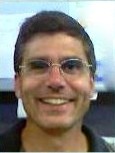 Dr.
Jeff Parkhurst, Academic Research Programs Manager in the Design Sciences
Area. Dr.
Jeff Parkhurst, Academic Research Programs Manager in the Design Sciences
Area.
Delivering cost effective SoC
based platform solutions: Design and Test challenges in the More than Moore
environment.
Abstract: For more than 30
years, Intel has been on a path of decreasing transistor feature size and
increasing density exponentially. As Intel expands its business into the SoC
world, new challenges emerge. We are not just integrating RF, AMS components
with digital, but are also trying to address issues at the platform level
expanding into the software/firmware domain. This talk will discuss the
unique challenges in the design and test area that we face and barriers we
need to overcome to be successful in the SoC space.
Bio: Jeff Parkhurst received his PhD from Purdue University in 1994. He has
worked as a circuits designer on a variety of projects. He is currently
academic research programs manager for design sciences at Intel Corp.
|
|
|
|
UC
Irvine |
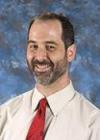 Dr.
Michael Green, Professor & Chair Department of Electrical & Computer
Engineering. Dr.
Michael Green, Professor & Chair Department of Electrical & Computer
Engineering.
Novel CMOS Design Techniques for Multi-Gb/s Broadband Communication
Circuits.
Abstract: The use of optical
fibers for broadband communication has dramatically reduced the speed
bottleneck in wide-area networks (WANs). Indeed, the bandwidth capability of
state-of-the art optical fibers is so large that it is the electrical
components connected at the ends of the fibers that limit transmission
speeds. Multi-gigibit communications IC's, until recently dominated by very
fast, expensive processes (e.g., III-V devices), are now commonly being
designed using standard CMOS technologies. The advantages of higher
integration levels and lower power dissipation are strong motivations for
moving to CMOS; however, designers are confronted with additional challenges
of high-speed design with devices that exhibit lower gain & bandwidth and
higher noise as compared to other technologies. Some novel design techniques
that enhance the speed and performance of CMOS broadband circuits will be
presented, including: Supply-insensitive ring oscillators; novel clock
divider techniques; design of adaptive equalizers for transmission across
copper, based on analog and DFE approaches; design of a 40Gb/s transmitter
in 180nm CMOS using distributed amplifier design techniques.
Bio: Dr. Michael Green received the B.S. degree in electrical engineering
from University of California, Berkeley in 1984 and the M.S. and Ph.D.
degrees in electrical engineering from University of California, Los Angeles
in 1988 and 1991, respectively. He has been on the faculty of the EECS
department at University of California, Irvine since 1997 and has been Chair
of the department since September 2009. From 1999 to 2001 he was an IC
designer with the Optical Transport Group at Broadcom Corp. (formerly
Newport Communications) where he was part of a design team that produced the
world's first 10 Gigabit-per-second broadband transmitter chip using
standard CMOS. His current research interests include the design of analog &
mixed-signal integrated circuits for use in high-speed broadband
communication networks. Dr. Green was the recipient of the Outstanding
Master's Degree Candidate Award in 1989 and the Outstanding Ph.D. Degree
Candidate Award in 1991, both from the UCLA School of Engineering and
Applied Science. He is also the recipient of the Sigma Xi Prize for
Outstanding Graduate Science Student at UCLA in 1991, the 1994
Guillemin-Cauer Award of the IEEE Circuits and Systems Society, the 1994 W.
R. G. Baker Award of the IEEE, a 1994 National Young Investigator Award from
the National Science Foundation and the Award for New Technical Concepts in
Electrical Engineering from IEEE Region 1.
|
|
|
|
Netlogic Microsystems
Keynote
|
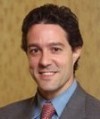 Dr.
Juan-Antonio Carballo, Director, Major Account, Netlogic Microsystems. Dr.
Juan-Antonio Carballo, Director, Major Account, Netlogic Microsystems.
Keynote
Dr.
Juan-Antonio Carballo Director of major account at Netlogic. He was
the IBM Corporation's Venture Capital Executive for
Semiconductors and Hardware Systems, responsible for creating and managing
strategic projects with top-tier Venture Capital firms and their portfolio
companies. Prior to this role, Juan-Antonio was leading research in adaptive
communications chips at IBM Research. He won an IBM Research Division award
for his work in this area. He filed 23 patents and has over 20 publications
in low-power design, communications systems, design economics, and
electronic design management. He is the Chair of the International
Technology Roadmap for Semiconductors (ITRS) Design and System Drivers
Chapters, the Chair Elect of IEEE's DATC Committee, and VSIA's R&D Chair in
2004-5. He has been on the committee of six symposiums and conferences, and
was the General Chair for Electronic Design Processes
2004 in Monterey, CA. His prior work experience includes stays at Digital
Equipment (currently HP) and LSI Logic. Juan-Antonio holds a Ph.D. in
Electrical Engineering from the University of Michigan, an M.B.A. from the
College des Ingenieurs (Paris),and a M.Sc. in Telecommunications Engineering
from the Universidad Politecnica de Madrid.
|
|
|
|
Lunch |
Lunch |
|
|
|
|
Emerging Technologies, Trends, and Possibilities in Designing Multicore SoC
Platforms.
Track Chairman: Dr. Payam Heydari, Professor, Electrical Engineering
and Computer Science, UC Irvine. |
|
|
|
|
Panel:
"More than Moore:
Emerging Trends & Challenges in Integration of RF & Analog/Mixed-Signal
(RF-AMS) Content into Low-Power SoC Platforms."
|
|
|
|
Panel EDA360
EDN
UCLA
Berkeley Design Automation, Inc.
IC Manage
Cypress Semiconductor
X-FAB Group
Broadcom |
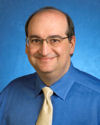 Steve
Leibson, EDA360 Evangelist. Steve
Leibson, EDA360 Evangelist.
Moderator
Bio: Steve Leibson literally
wrote the books on IP-based SOC design — “Designing SOCs with Configured
Cores,” published in 2006 and “Engineering the Complex SOC,” co-authored
with Dr. Chris Rowen and published in 2004. Steve has been evangelizing
IP-centric SOC design since 2001 through articles, White Papers, books and
book chapters, Webinars, videos, invited keynote presentations, conference
presentations, and in-booth trade show presentations around the world. He is
now the EDA360 Evangelist and Marketing Director at Cadence Design Systems,
a leading EDA vendor specializing in system and chip-level design tools,
design IP and IP design platforms, and verification IP. Prior to joining
Tensilica as Technology Evangelist, he was VP of Content for Reed-Elsevier/Microdesign
Resources, managed and ran the Microprocessor Forum, and he has served as
editor in chief of the Microprocessor Report newsletter, EDN Magazine, and
Embedded Developer’s journal where he set publication vision and mission and
managed editorial and production teams of experienced journalists and
writer/engineers. He has many years of experience in persuasively
communicating with the electronic design community across a broad range of
topics and has made a particular study of reaching the extremely elusive
design community for the purpose of lead generation through diverse channels
including the Internet, blogs, social media, and online video.
Panelists:
1. Professor Sudhakar Pamarti (Research
Group: Signal Processing and Circuit Engineering), UCLA.
2. Dr. Ravi Subramanian, President & CEO,
Berkeley Design Automation, Inc.
3. Dr. Ted Williams, Director of Silicon
IP, IC Manage.
4. Dr. Babak Taheri, Vice President, Technical Staff, in charge of IP and
new product development, Cypress Semiconductor.
5. Mr. Olaf Zinke, Product
Line Manager AMS/RF, X-FAB Group.
6. Dr. Masoud Kahrizi,
Scientist, Principal - RF/Wireless Mobile Platform, Broadcom.
|
|
|
|
Berkeley Design Automation, Inc. |
 Paul
Estrada, Chief Operating Officer, Berkeley Design Automation, Inc. Paul
Estrada, Chief Operating Officer, Berkeley Design Automation, Inc.
Panelist.
Bio: Prior to BDA, Estrada spent nearly 6 years at Cadence Design Systems
where he was general manager for Encounter Test, corporate vice president of
strategy, and launched the Virtuoso custom design platform, Encounter
digital design platform, and Incisive functional verification platform. In
1996, he co-founded 0-In Design Automation and helped pioneer
assertion-based verification as their VP verification engineering. From
1992-1996 Estrada was responsible for synthesis marketing at Synopsys during
that business’ explosive growth period. He also has experience in the
semiconductor, wireless communication, and industrial automation industries.
Estrada holds engineering degrees with top honors from Stanford University
and the University of Illinois. He also holds three patents. |
|
|
|
UCLA |
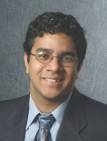 Dr.
Sudhakar Pamarti, Assistant Professor of Electrical Engineering, University
of California, Los Angeles. Dr.
Sudhakar Pamarti, Assistant Professor of Electrical Engineering, University
of California, Los Angeles.
Panelist.
Bio: Dr. Sudhakar Pamarti is an assistant professor of electrical
engineering at the University of California, Los Angeles, where he teaches
and conducts research in the fields of mixed-signal circuit design and
signal processing. He received the Bachelor of Technology degree in
electronics and electrical communication engineering from the Indian
Institute of Technology, Kharagpur in 1995, and the M.S. and the Ph.D.
degrees in electrical engineering from the University of California, San
Diego in 1999 and 2003, respectively. Prior to joining UCLA, he has worked
at Rambus Inc. (‘03-`05) and Hughes Software Systems (‘95-`97) developing
high speed I/O circuits and embedded software and firmware for a
wireless-in-local-loop communication system respectively. Dr. Pamarti has,
in the past, served on the editorial board of the IEEE Transactions on
Circuits and Systems II and is a recipient of the NSF CAREER award.
|
|
|
|
Broadcom Corporation |
 Dr.
Masoud Kahrizi, Scientist, Principal - RF/Wireless, Broadcom
Corporation. Dr.
Masoud Kahrizi, Scientist, Principal - RF/Wireless, Broadcom
Corporation.
Panelist.
Bio:
Dr Masoud Kahrizi is a Principal Scientist at
Broadcom Corporation and is responsible for RF system integration in the
next generation system on chip radio for cellular communications. Dr.
Kahrizi graduated from Syracuse University, Syracuse, NY, in 1992 with a Ph.
D. in Electrical Engineering. He joined the Department of Electrical
Engineering, Tarbiat Modares University (TMU) , Tehran. During 1997-99, he
was the technical manager at Telecommunication Research Center (ITRC),
Tehran, where he developed an RF section for the Base Station of GSM
wireless systems. In April 1999, he left TMU as associate professor and
joined the University of Waterloo in Canada where he developed and
implemented an innovative approach for filter diagnosis and computer tuning
of RF & Microwave filters in collaboration with Ericsson Canada Inc. Since
2000, Dr. Kahrizi has worked as a senior system architect in RFIC and
systems design on multi-standard transceiver for GSM, WCDMA and WLAN. From
2005 to 2009, Dr. Kahrizi worked as a senior principal engineer to develop
integrated multi-standard radio for 2.5 and 3G at Skyworks solutions inc.,
Irvine, CA. Dr. Kahrizi is a senior member of IEEE and has more than 18
years of experience in RF/Microwave and Wireless Communication and has
authored or co-authored more than 20 technical papers, patents and
conference presentations in the areas of wireless communication, RF, and
microwave design. Since 2007, Dr Kahrizi has been acted as Vice-Chairman of
Orange County IEEE EDS/MTT Joint Chapter where has provided or organized
technical session in the area of his expertise.
|
|
|
|
X-FAB Group |
 Mr. Olaf Zinke,
Product Line Manager AMS/RF, X-FAB Group. Mr. Olaf Zinke,
Product Line Manager AMS/RF, X-FAB Group.
Panelist.
Bio:
As Product Line Manager, Olaf Zinke is
responsible for the Analog/Mixed-signal and RF product line. Prior to
joining X-FAB he worked for Cadence Design Systems as Senior Product
Marketing Manager responsible for Analog/Mixed-signal simulation
technologies, in particular the Virtuoso AMS Designer Product. Earlier, Olaf
worked as a Corporate Application Engineer specializing on AMS behavioral
modeling languages at Cadence and Analogy, and prior to this as an IC Design
Engineer in the field of Electronic Control Units for Automotive
Applications at Continental Teves. Olaf has
20 years of experience in the
design, application and marketing of Semiconductor and Electronic Design
Automation products. He holds a Master of Science degree in Theory of
Electrical Engineering from the Technical University of Ilmenau, Germany.
|
|
|
|
Cypress Semiconductor |
 Dr. Babak Taheri,
Vice President, Technical Staff, in charge of IP and new product
development, Cypress Semiconductor. Dr. Babak Taheri,
Vice President, Technical Staff, in charge of IP and new product
development, Cypress Semiconductor.
Panelist.
Bio: Babak Taheri is vice president of worldwide corporate IP at
Cypress Semiconductor Corp. whose team headed up development of Cypress’s
multitouch technology, now in volume production. Prior to his current role,
Taheri was responsible for corporate product development, where he served as
director of design, establishing more than ten design centers of excellence
worldwide. Prior to re-joining Cypress, Dr. Taheri was vice president
of engineering at InvenSense Inc., a fabless MEMS semiconductor company
focusing on high-volume product delivery to consumer markets. Dr.
Taheri has more than 25 years of semiconductor industry experience that
includes founding Integrated Biosensing Technologies, a biomedical
corporation. He also has held key positions at Intel, SRI International,
Redwood Microsystems, and Apple. Dr. Taheri holds a doctorate degree
in electrical engineering & Neurosciences from the University of California
at Davis, and more than 20 U.S. patents.
|
|
|
|
Lunch
|
Lunch
|
|
|
|
|
Panel:
“Emerging
Technologies, Trends, and Possibilities in Designing Multicore SoC
Platforms.
"
|
|
|
|
Panel
Savant Company Inc.
Bluespec,
Inc.
Real
Intent
Target Compiler Technologies
EDA360
Cadence Design Systems
Zocalo Tech, Inc.
UCR
|
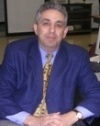 Moderator:
Farhad Mafie, Savant Company
Inc., President & CEO. SoC Conference Chairman & Developer. Moderator:
Farhad Mafie, Savant Company
Inc., President & CEO. SoC Conference Chairman & Developer.
Panelists:
1.
George Harper, VP Marketing, Bluespec, Inc.
2. Dr.
Pranav Ashar, Real Intent CTO, Real Intent.
3. Steve Cox, VP Business Development,
Target Compiler Technologies.
4. Steve Leibson, EDA360 Evangelist.
Cadence Design Systems.
5. Howard Martin, President of Zocalo
Tech, Inc.
6. Dr. Philip Brisk, Assistant Professor,
Department of Computer Science and Engineering Bourns College of Engineering
University of California, Riverside.
|
|
|
|
Panelist
Bluespec, Inc. |
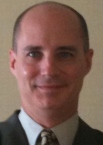 George
Harper, VP Marketing, Bluespec, Inc. George
Harper, VP Marketing, Bluespec, Inc.
Panelist
Bio: Mr. Harper has more than 25 years of marketing and engineering
experience from the semiconductor, communications, and storage industries.
He has overall responsibility for Bluespec's product planning and marketing
initiatives. Previously, Mr. Harper was director of marketing at Trebia
Networks, where he managed the product planning and marketing initiatives
for a storage network processor family. Prior to that, he held senior
marketing positions at Conexant Systems (formerly Maker Communications) and
Shiva Corporation, and engineering positions at LSI Logic, in both
California and Massachusetts, specifically in the areas of chip design and
microprocessor sales. Harper has a B.S. and an M.S. in electrical
engineering from Stanford University and an M.B.A. from Harvard University.
|
|
|
|
Panelist
Real Intent |
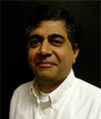 Dr.
Pranav Ashar, CTO, Real Intent. Dr.
Pranav Ashar, CTO, Real Intent.
Panelist
Bio: Dr. Pranav Ashar, Real Intent CTO, brings two decades of EDA expertise
to Real Intent. Pranav received his M.S. and Ph.D. in EECS with emphasis on
EDA from the University of California, Berkeley in 1989 and 1991,
respectively. He then joined NEC Labs in Princeton, NJ where he developed a
number of EDA technologies that have influenced the industry. One of his
important accomplishments there was in raising the prominence of formal
methods in VLSI design through the creation of a very successful
Verification Department and the development and widespread deployment in EDA
tools of practical methods for formal verification. Through his leadership,
the department also parlayed its formal methods expertise into practical
methods for formal analysis in software engineering that have been deployed
in the field. Pranav also created a successful department at NEC Labs for
the application of automata and machine learning methods in the management
of large-scale distributed systems. Pranav previously served as CTO at Real
Intent from 2004 through 2006. In the interim, he served as CTO at a
mobile-phone security company called NetFortis that he co-founded for which
he developed low-energy high-performance algorithms for malware detection,
and Chief Scientist at a simulation acceleration company called Liga Systems
that was based on technology developed by him at NEC Labs for custom-VLIW
based parallel simulation that was recently able to demonstrate a reduction
in simulation time from 21 days to about 1 day on a 25 Million gate design.
Pranav has authored about 70 publications in refereed conferences and
journals with approximately 800 citations, and co-authored a book titled
"Sequential Logic Synthesis". He has 35 patents granted and pending, many of
which have been licensed or part of business enablement. Pranav has been on
committees of ICCD, ICCAD and IWLS. He was ICCD Program Chair in 2004 and
2005, and ICCD General Chair in 2006. Pranav is an adjunct faculty in the
CSEE department at Columbia University where he has taught graduate and
undergraduate courses on VLSI design automation, VLSI Verification, and VLSI
design. Pranav has also taught a graduate course on Switching Theory in the
EE department at Princeton University.
|
|
|
|
Panelist
Target Compiler Technologies |
 Steve
Cox & Gert Goossens, Target Compiler Technologies - Leuven, Belgium and
Boulder, CO USA. Steve
Cox & Gert Goossens, Target Compiler Technologies - Leuven, Belgium and
Boulder, CO USA.
Panelist
Bio: Steve Cox joined Target Compiler Technologies in 2006 and leads
Target’s North American activities. Steve has a long history of innovation
in the design and verification of processors and SoCs, including work at
companies such as Accelchip, Apple, Ball Aerospace, Cadence, Cisco,
Conexant, Intel, Motorola/Freescale, Nortel, and Solbourne Computer. Steve
holds patents in the area of transaction-based verification of SoCs and is
an alumnus of the University of Colorado. Steve currently resides in
Boulder.
|
|
|
|
Panelist
Zocalo Tech, Inc. |
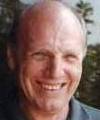 Howard
L. Martin, Founder and President of Zocalo Tech, Inc. Howard
L. Martin, Founder and President of Zocalo Tech, Inc.
Panelist.
Bio: Over 30 years of experience in EDA sales and management specializing in
early stage startups. He was one of the first salesmen when EDA emerged as a
distinct market working for Daisy Systems. In the early nineties immediately
after the merger of ECAD and SDA to form Cadence and subsequent acquisition
of Gateway, he was responsible for the sales and support for the Western US.
He was a founder and President of SpeedGate, Inc. acquired by Mentor
Graphics in 2001. He is presently a founder and President of Zocalo Tech,
Inc. Martin has a BS in Aeronautical Engineering and MS in Physics.
|
|
|
|
Panelist
EDA360
Cadence Design Systems |
 Steve
Leibson, EDA360 Evangelist. Cadence
Design Systems. Steve
Leibson, EDA360 Evangelist. Cadence
Design Systems.
Panelist
Bio: Steve Leibson literally
wrote the books on IP-based SOC design — “Designing SOCs with Configured
Cores,” published in 2006 and “Engineering the Complex SOC,” co-authored
with Dr. Chris Rowen and published in 2004. Steve has been evangelizing
IP-centric SOC design since 2001 through articles, White Papers, books and
book chapters, Webinars, videos, invited keynote presentations, conference
presentations, and in-booth trade show presentations around the world. He is
now the EDA360 Evangelist and Marketing Director at Cadence Design Systems,
a leading EDA vendor specializing in system and chip-level design tools,
design IP and IP design platforms, and verification IP. Prior to joining
Tensilica as Technology Evangelist, he was VP of Content for Reed-Elsevier/Microdesign
Resources, managed and ran the Microprocessor Forum, and he has served as
editor in chief of the Microprocessor Report newsletter, EDN Magazine, and
Embedded Developer’s journal where he set publication vision and mission and
managed editorial and production teams of experienced journalists and
writer/engineers. He has many years of experience in persuasively
communicating with the electronic design community across a broad range of
topics and has made a particular study of reaching the extremely elusive
design community for the purpose of lead generation through diverse channels
including the Internet, blogs, social media, and online video.
|
|
|
|
Panelist
UCR |
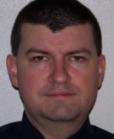 Dr.
Philip Brisk, Assistant
Professor, Department of Computer Science and Engineering Bourns College of
Engineering University of California, Riverside. Dr.
Philip Brisk, Assistant
Professor, Department of Computer Science and Engineering Bourns College of
Engineering University of California, Riverside.
Panelist
Bio: Philip Brisk received his
B.S., M.S., and Ph.D. degrees, all in Computer Science, from UCLA in 2002,
2003, and 2006 respectively. From 2006-2009, he was a postdoctoral scholar
in the Processor Architecture Laboratory at the Ecole Polytechnique Federale
de Lausanne (EPFL) in Switzerland. Since 2009, he has been an Assistant
Professor in the Department of Computer Science and Engineering at the
University of California, Riverside.
Dr. Brisk's research interests include embedded processor architecture and
customization, FPGAs and reconfigurable computing, compilers, VLSI-CAD,
computer arithmetic, and emerging microfluidic technologies. He has received
best paper awards at CASES 2007 and FPL 2009, and has been nominated for
best paper awards at DAC 2007 and HiPEAC 2010. He is a member of the ACM and
IEEE.
|
|
|
|
Xilinx
Keynote |
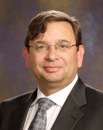 Dr.
Ivo Bolsens, Senior Vice President and Chief Technology Officer, Xilinx Inc. Dr.
Ivo Bolsens, Senior Vice President and Chief Technology Officer, Xilinx Inc.
Keynote
Bio:
Ivo Bolsens is senior vice president and chief technology officer (CTO),
with responsibility for advanced technology development, Xilinx research
laboratories (XRL) and Xilinx university program (XUP). Bolsens came
to Xilinx in June 2001 from the Belgium-based research center IMEC, where he
was vice president of information and communication systems. His research
included the development of knowledge-based verification for VLSI circuits,
design of digital signal processing applications, and wireless communication
terminals. He also headed the research on design technology for high-level
synthesis of DSP hardware, HW/SW co-design and system-on-chip design.
Bolsens holds a PhD in applied science and an MSEE from the Catholic
University of Leuven in Belgium.
|
|
|
|
Intel |
 Durgesh
Srivastava, Principal Engineer in the Embedded and Communications Group. Durgesh
Srivastava, Principal Engineer in the Embedded and Communications Group.
Intel’s ATOM™ based SoC – Tunnel Creek.
Abstract: Tunnel Creek is
Intel’s next generation ATOM™ based SoC. In this talk Durgesh will talk
about the 3 cornerstones of innovation namely platform flexibility, reduced
bill of materials and performance density and will showcase application case
studies with examples on In-Vehicle Infotainment, IP Media Phone,
Programmable Logic Controller and Electronic Cash Register.
Bio: Durgesh Srivastava is Principal Engineer in the Embedded and
Communications Group at Intel. He is driving the silicon and system
architecture for Atom based System on a Chip (SOC) for Embedded group. He
has been at Intel for almost fourteen years. He holds Masters degree from
Hong Kong University of Science and Technology, Hong Kong and Bachelors from
Indian Institute of Technology, Kanpur, India, in Electrical Engineering.
|
|
|
|
University of Southern
California |
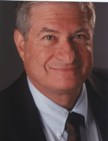 Dr.
Mel Breuer, of Electrical Engineering-Systems Department of Electrical
Engineering-Systems University of Southern California. Dr.
Mel Breuer, of Electrical Engineering-Systems Department of Electrical
Engineering-Systems University of Southern California.
Novel ways to use future SoC technologies.
Abstract: Technological
achievements have made it possible to: fabricate CMOS circuits with over a
billion transistors; implement Boolean operations using quantum devices
and/or the spin of an electron; implement transformations using bio and
molecular based cells. Problems with many of these technologies are due to
such factors as process variations, defects and impurities in materials and
solutions, and noise. Consequently, many systems built from these
technologies operate imperfectly. Luckily there are many complex and
large-market systems (applications) that tolerate acceptable though not
always correct results. In addition, there is emerging a body of
mathematical analysis related to imperfect computation. In this presentation
we first introduce the concepts of acceptable error-tolerance and acceptable
performance degradation, and demonstrate how important attributes of these
concepts can be quantified. We interlace this discussion with several
examples of systems that can effective employ these two concepts. Next we
mention several emerging technologies that motivate the need to study these
concepts as well as related mathematical paradigms.
Bio: Melvin A. Breuer received his Ph.D. in electrical engineering
from the University of California, Berkeley, and is the Charles Lee Powell
Professor of Electrical Engineering and Computer Science at the University
of Southern California. He was Chairman of the Department of Electrical
Engineering-Systems from 1991-1994, and again from 2000-2003. He was Chair
of the Faculty of the School of Engineering, USC, for the
1997-98 academic year. His main interests are in the area of computer-aided
design of digital systems, design-for-test and built-in self-test, and VLSI
circuits. Dr. Breuer is the editor and co-author of Design Automation of
Digital Systems: Theory and Techniques, Prentice-Hall; editor of Digital
Systems Design Automation: Languages, Simulation and Data Base, Computer
Science Press; co-author of Diagnosis and Reliable Design of Digital
Systems, Computer Science Press; co-editor of Computer Hardware Description
Languages and their Applications, North-Holland; co-editor and contributor
to Knowledge Based Systems for Test and Diagnosis, North-Holland; and
co-author of Digital System Testing and Testable Design, Computer Science
Press 1990 and reprinted in 1995 by the IEEE Press. He has published over
230 technical papers and was formerly the editor-in-chief of the Journal of
Design Automation and Fault Tolerant Computing, on the editorial board of
the Journal of Electronic Testing, the co-editor of the Journal of Digital
Systems, and the Program Chairman of the Fifth International IFIP Conference
on Computer Hardware Description Languages and Their Applications. He is a
co-author of a paper that received an honorable mention award at the 1997
International Test Conference, a co-author of a paper nominated for the best
paper award at the 1998 Design Automation and Test in Europe Conf., a
co-author of a paper published in the 1998 International Test Conference
that was selected to be in a compendium of significant papers over the last
35 years, and a co-author of the best paper at the 2000 Asian Test
Symposium. He is a Life Fellow of the IEEE; was a Fulbright-Hays scholar
(1972); received the 1991 Associates Award for Creativity in Research and
Scholarship from the University of Southern California, the 1991 USC School
of Engineering Award for Exceptional Service, the IEEE Computer Society’s
1993 Taylor L. Booth Education Award, an Okawa Foundation Research Grant in
support of research to “Increase the effective yield of VLSI chips via
design and test” (2003), and the first (2000) Engineering Faculty Council
Award for Outstanding Meritorious Service to the USC School of Engineering.
He was the keynote speaker at the Fourth Multimedia Technology and
Applications Symposium, 1999; the Ninth Asian Test Symposium, 2000; the
International Conference on Computer Design (ICCD), 2004; the Annual
Symposium on VLSI (ISVLSI), 2005; the IEEE VLSI Test Symp., 2008, and an
invited speaker at the Thirteenth Asian Test Symposium, 2004. The Test
Technology Technical Council of the IEEE Computer Society hosted a forum on
October 26, 2006 at the Hyatt Regency Hotel, Santa Clara, California to
“celebrate Professor Melvin A. Breuer’s illustrious career and recognize his
contributions to VLSI areas of design automation, design for testability,
fault tolerance and test; and the influence he had on the industry and
academia as an educator and a mentor.”
|
|
|
|
MoSys,
Inc. |
 Mark
Baumann, Director, Product Definition and Applications. MoSys, Inc. Mark
Baumann, Director, Product Definition and Applications. MoSys, Inc.
Breaking Bandwidth Density Barriers With GigaChiptm Serial Interface and the
Bandwidth Enginetm.
Abstract: As Network equipment
manufacturers design equipment for 100G and beyond the density of bandwidth
not only increases at the edges of the cards but also at the edges of the
silicon devices. NPUs, ASICs, and FPGAs are running out of pins to meet the
bandwidth demands with today’s memory. Virtually all ASIC, FPGA and NPU use
the DDR style interface to communicate with all types of high speed memory
and coprocessors from DDR3, QDR, RLDRAM to Knowledge Based Processors.
Because clock rates on the DDR interface have not kept up with the growth in
serial communication rates, designers are approaching an impasse. In order
to put memory bandwidth on an equal footing with line rates, memories and
coprocessors must adopt SerDes based I/O. To meet the widening gap new
memory and ALU called Bandwidth Engine was announced along with an new
serial interface called GigaChip™ Interface was announced to address the
challenges of increased bandwidth density and the increased demand in random
memory access rates. The GigaChip Interface is CE-11 compatible,
short-reach, low-power serial interface which enables highly efficient,
high-bandwidth, low-latency performance chip to chip communication at the
board level. Similar to the fundamental performance breakthrough achieved by
the move to double data rate (DDR) style interfaces in the late 90’s, the
GigaChip Interface will provide the next breakthrough in chip-to-chip
communications using differential SerDes technology. A 16-lane GigaChip
Interface can replace up to four separate 78-pin DDR parallel interface
busses to memory, which represents a memory performance increase of 4 times,
while reducing system power and interface costs by 2 to 3 times. Such
bandwidth density increases will be required to realize line cards with
aggregate through put beyond 100G in future networking systems. The Gigabit
Interface has adopted the open CEI-11 electrical transport standard making
use of existing electrical ecosystem in order to shorten time to market for
introduction of system designs. This presentation will describe the GigaChip
serial interface and the show how an increase in 3 to 4 bandwidth density vs
silicon area over today’s DDR style interface can be achieved.
Bio:
Mr. Baumann brings more
than 10 years of engineering management experience in silicon design,
printed circuit board design and product definition to MoSys. Prior to
joining MoSys, he served as the Cisco Account Manager for NetLogic
Microsystems, overseeing the technical support and sales teams servicing
Cisco Systems. Previous to NetLogic, Mr. Baumann served as the Director of
Engineering for Integrated Device Technology where he built the design team
and managed development of IP co-processor products. During his tenure at
IDT, he also held the positions of Memory Products Manager for the Systems
Technology Group, Member of the Technical Staff, and Field Applications
Engineer. Prior to IDT, Mr. Baumann held design engineering and design
management roles for Raytheon. Mr. Baumann holds a Bachelor of Science
in Electrical Engineering from Manhattan College in New York, New York and
has been awarded more than ten patents to date. |
|
|
|
Cadence
Design Systems |
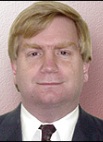 Thomas
L. Anderson, Product Management Group Director, Cadence Design Systems. Thomas
L. Anderson, Product Management Group Director, Cadence Design Systems.
UVM: Essential Methodology Standardization for Multi-Core SoCs.
Abstract: Standardization of
design and verification languages has been an accepted part of the
electronics industry for nearly 25 years. Design and verification engineers
take it for granted that Accellera and IEEE will define new language
standards and evolve existing ones. Until very recently, verification
methodologies and supporting libraries have fallen outside of
standardization activities. At the same time, the ever-increasing complexity
of today’s SoCs, especially those with multiple cores, has put tremendous
pressure on the verification process. The industry has been demanding a
methodology standard. This talk describes the new Universal Verification
Methodology (UVM) standard from Accellera, released in May 2010. The talk
discusses the impact that the UVM has made on the development of SoCs and
provides a brief history of its development, including the relationship to
the Open Verification Methodology (OVM), which was introduced at the SoC
Conference in 2008. Particular focus is given to the value that the UVM and
its vendor/partner ecosystem bring to the developmers of multi-core SoCs.
This talk is essential for SoC verification engineers, designers tasked with
verification responsibilities, and SoC project managers.
Bio: Thomas L. Anderson is a Product Management Group Director at
Cadence, where his responsibilities include all verification software
products. His previous positions include Director of Technical Marketing at
Synopsys, Vice President of Applications Engineering at 0-In Design
Automation, and Vice President of Engineering at Virtual Chips. Mr. Anderson
has presented more than 100 conference talks and published more than 150
papers and technical articles. He holds an MS in Electrical Engineering and
Computer Science from MIT and a BS in Computer Systems Engineering from the
University of Massachusetts at Amherst.
|
|
|
|
Seagate |
 Patrick
Ryan, Vice President – Research and Development, Memory Products Group –
Alternative Technology Group, Bloomington, Minnesota, Seagate. Patrick
Ryan, Vice President – Research and Development, Memory Products Group –
Alternative Technology Group, Bloomington, Minnesota, Seagate.
The Implication of Emerging Memory on System-on-Chip Design.
Abstract: As device dimensions
shrink into the nanometer regime, most of the current dominant memory
technologies, e.g., SRAM, DRAM and Flash, are facing severe scalability
challenges. Many alternative technologies have emerged, including Phase
Change Memory, Resistive Memory and Magnetic Memory to meet these
challenges. These emerging memory technologies promise many attractive
characteristics, such as high-density, high-speed access, zero standby
power, non-volatility, virtually unlimited endurance and CMOS process
compatibility, etc. These unique properties provide many promising
opportunities for the future System-on-Chip (SoC) designs. As the
next-generation of magnetic memory technology, Spin-Transfer Torque Random
Access Memory (STT-RAM) has recently attracted increasing attention from the
solid state circuit community. This talk will first outline the fundamentals
of STT-RAM technology and include the efforts in research and development of
new materials, devices, and circuit architectures ongoing in the industry.
The implication of the advances in STT-RAM technology on SoC and other
applications will be also be discussed. A perspective on future research
necessary for continued STT-RAM advancement, essential in meeting the
progression of Moore’s law, will be given.
Bio: Patrick Ryan, Vice President – Research and Development, Memory
Products Group – Alternative Technology Group, Bloomington, Minnesota. Pat
Ryan has worked in the HDD industry for over 20 years, joining Control Data
Corporation(Magnetic Peripherals) as a design engineer in 1984 and then
joining Seagate in 1989.(when Seagate purchased, Magnetic Peripherals) He
has worked on Thin-Film Head Technology for much of his career holding
engineering and management positions in both development and manufacturing.
He is currently Vice President for Alternative Technology Development where
he manages a team responsible for advanced Solid State Drive (SSD)
development. Prior to this he held the post of Chief Technologist for Head
Technology in the Recording Heads - Advanced Transducer Development. Past
work responsibilities have included technical management of International
R+D team (US + Ireland) in the development and integration of world class
transducer devices for the disk drive market. He has a strong background in
recording, magnetics and micro-magnetics, with emphasis on advanced devices
and materials. Over the course of his career he has been a key contributor
to delivery of new capital investments in Minnesota that have helped expand
Seagate’s presence here. Currently, Pat serves on the Board of MN Nano,
private sector advocacy organization promoting nanotechnology in Minnesota,
where he has been Chair for the past 3 years. He has also served on the
Technology Advisory boards for Veeco Instruments, and Imago Instruments
(Startup - Atom Probe) He has been on the Industrial Advisory Board for U of
Minnesota Electrical and Computer Engineering department for the past 4
years. Pat holds a degree in Electrical Engineering (1983), from the
University of Minnesota. Currently, he also holds more than 25 patents in
nanotechnology including magnetic devices, MEMs, and thin-film technology.
|
|
|
|
|
Day TWO Nov. 4, 2010
SoC Conference Program Agenda* |
|
|
|
|
Software
Strategies, Planning, and Solutions, for Embedded Multicore SoC Platform
Development.
Track
Chairman: Farhad Mafie, SoC Conference Chairman, Savant Company Inc.,
President & CEO.
|
|
|
|
Savant
Company Inc. |
 Farhad
Mafie, SoC Conference Chairman, President and CEO of Savant Company Inc. Farhad
Mafie, SoC Conference Chairman, President and CEO of Savant Company Inc.
Farhad Mafie is President and
CEO of Savant Company Inc., a technology marketing company in Irvine, CA.
Savant specializes in marketing and sales of semiconductor IC/IP products,
SoC/ASIC services and solutions, as well as providing targeted technical-
and business-related training seminars and conferences globally. He has over
20 years of experience in semiconductor and computer businesses and more
than 10 years of university-level teaching experience. He is the former Vice
President of Marketing and Engineering at Toshiba Semiconductor. He has also
worked in strategic marketing, project and design engineering at Lucent
Technologies, Unisys, and MSI Data. Farhad has a Master of Science and a
Bachelor of Science degree in Electronic Engineering from California State
University, Fullerton. He is an author and a translator, and his articles
have been published in a variety of journals and Web-based magazines on
technology and political affairs. In 2003, he published the biography of
Iranian poet and Nobel nominee who lived in exile, Nader Naderpour
(1929-2000), Iranian Poet, Thinker, Patriot. Farhad is also Editor-in-Chief
for the CRC Press SoC Design and Technologies Book Series, which includes
(1) Low-Power NoC for High-Performance SoC Design and (2) Design of
Cost-Efficient Interconnect Processing Units. Farhad is an active member of
IEEE, and he is the chair of IEEE Orange County Solid-State Circuits Society
(SSCS), as well as IEEE Orange County Entrepreneurs' Network (OCEN). He is
also a member of two UCI Advisory Committees: Communication System
Engineering and Embedded System Engineering Certificate Programs.
|
|
|
|
Southern California Edison |
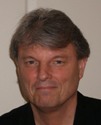 Mike
Sanders, PMP, Project Manager. Mike
Sanders, PMP, Project Manager.
Advanced Multitasking - Do More, Work Less, Be Happy.
Abstract: Multitasking seems to be one of required skill sets in today’s
highly-tasked workforce. As a matter of fact, it seems that if you’re not
multitasking, there must be something wrong with you - you’re not perceived
as a high achiever. In his presentation, Mike discusses multitasking as you
have never heard it before; how it really works, what it can do “for” you,
what it can do “to” you, research about it, proven methods and tools to
improve task performance, and measurements for “advanced” multitasking in
today’s complex workforce. He will show you how multitasking can be
leveraged by your three brains (yes, three) to maximize your output while
working fewer hours, with less anxiety, and having more fun.
This is powerful material, so get ready to explode onto your work scene –
the next day! Can you handle even more success?
Bio: Mike Sanders is a Project Manager at Southern California Edison and PMP.
He is Past President of the local Project Management Institute (PMICIE) and
President of the Society for Technical Communication (IESTC). Mike has over
15 years experience in project management and over 10 years in the field of
technical writing. He has taught and trained at the university, college, and
industry levels and is a regular public speaker. Mike has presented
Advanced Multitasking concepts at PMI's Inland Empire, Los Angeles, Orange
County, San Diego, and Los Padres Chapters, at the IIBA Orange County
Chapter, at San Diego's Naval Weapons Center, at the SQCAA Orange County and
Inland Empire Chapters, at the Southern Technology Conference (SoTeC), at
PMI San Diego’s Annual Conference, regularly through the University of
California Irvine's Project Management Certification Program, and at
numerous companies throughout Southern California.
|
|
|
|
Symbian Foundation Limited |

Oliver Gunasekara, Head of North America Global Alliances, Symbian
Foundation.
Symbian Smartphone
Operating System Past, Present & Future.
Abstract: This
presentation explores the driving requirements for embedded multicore SoC
platforms in smart mobile devices. The speaker will compare and distinguish
between a Smartphone from 2000 (ARM7), 2010 model (ARM Cortex-A8) and 2015
(ARM 'Eagle' & 'Kingfisher'). He will discuss the demands and challenges
being introduced by future use cases, which demand increased performance,
increased power efficiency and embedded security. The speaker will compare
Symbian OS with various Smartphones’ operating systems and discusses the OS
porting challenges, performance issues, power consumption, and other
considerations for selecting an Operating System for these new complex
devices/applications. The presentation will also break-down the reasoning
behind the industry’s need for more software standards around SoC
interfaces, avoiding the duplicated and undifferentiated work by different
semiconductor vendors.
Bio:
Oliver is part of the management team
responsible for encouraging adoption and contribution of the Symbian
Platform across strategic manufacturers, semiconductors and operators. He is
based in Silicon Valley. Oliver joined ARM Ltd in 1995. The UK’s most
successful technology start-ups which had an IPO in 1998. He was tasked with
getting ARM technology into mobile handsets. Initially working in Europe, he
latter relocated to Japan in 2008. In 2002 he became the Global Director of
Mobile Solutions delivering an almost 100% market share today. In 2005 he
became the Vice President corporate business development and M&A relocated
to the SF bay area. In 2007 he joined a video fabless start-up called W&W
Communications as Vice President of Mobile business which was acquired in
2008 by Cavium Networks. In May 2009 he joined the non-profit open source
Symbian Foundation. Oliver holds a Bachelor's degree with honours in
Electrical and Electronic Engineering from the University of Greenwich
London, UK.
|
|
|
|
Intel |
 David
Stewart, Manager of the Embedded Linux Engineering team. David
Stewart, Manager of the Embedded Linux Engineering team.
Creating Coherence in SoC Linux.
Abstracts: TBA.
Bio: David Stewart is the
manager of the Embedded Linux Engineering team within the Open Source
Technology Center (OTC), part of the System Software Division of the
Software and Services Group (SSG) of Intel Corporation. Before the formation
of this team, David held a variety of software development management
positions in SSG and in Intel’s Desktop Boards and Systems division and
Server Products group. Prior to joining Intel in 1997, David held management
and engineering positions in consumer software products and operating system
development, including Sequent, Tektronix. David holds a BS and MS in
Computer Science from Colorado State University in Fort Collins, which he
received in 1983. David has given keynotes and presentations in over 40
technical conferences, and a series of popular technical videos on YouTube.
|
|
|
|
MontaVista |
 James
Ready, CTO. James
Ready, CTO.
Beyond Virtualization: A Novel Software Architecture for Multi-Core SOCs.
Abstract: TBA.
Bio:
James Ready is the founder of MontaVista software and a
recognized authority in the embedded real-time software industry. He
developed the first commercially viable, real-time operating system: VRTX
kernel. He founded Ready Systems in 1980, which merged with Microtec
Research, went public in 1994, and was acquired by Mentor Graphics in 1995.
During this period, Mr. Ready served as president of Ready Systems and as
CTO of Microtec and Mentor. In 1999, Mr. Ready founded MontaVista Software
to bring the Linux operating system to the embedded systems market. He
earned a BA from the University of Illinois and an MA from the University of
California, Berkeley.
|
|
|
|
Morning Break
|
Morning Break
|
|
|
|
Mindspeed Technologies, Inc.
Keynote |
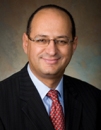 Raouf
Y. Halim, Chief Executive Officer. Mindspeed Technologies, Inc. Raouf
Y. Halim, Chief Executive Officer. Mindspeed Technologies, Inc.
Keynote
Bio: Mr. Halim has been a
director since January 2002 and our chief executive officer since June 2003.
He was the senior vice president and chief executive officer of the internet
infrastructure business of Conexant from February 2002 to June 2003 and the
senior vice president and general manager, network access division, of
Conexant from January 1999 to February 2002. |
|
|
|
|
Panel:
“Software
Strategies, Planning, and Solutions, for Embedded Multicore SoC Platform
Development.”
|
|
|
|
Panel
Embedded Insights Inc
Microsoft
MontaVista
ARM
Intel
Conexant
Carbon
Design Systems
Signum
Systems Corp. |
 Robert
Cravotta is the principal analyst at Embedded Insights Inc, and Contributing
Editor at EDN Magazine. Robert
Cravotta is the principal analyst at Embedded Insights Inc, and Contributing
Editor at EDN Magazine.
Moderator
Bio: Robert Cravotta is the
principal analyst at Embedded Insights Inc. As a former Technical Editor
covering Embedded Processing at EDN, Robert has been following and
commenting on the embedded processing space since 2001. His expertise
includes software development and system design using microprocessors,
microcontrollers, digital signal processors (DSPs), multiprocessor
architectures, processor fabrics, coprocessors, and accelerators, plus
embedded cores in FPGAs, SOCs, and ASICs. Robert's embedded engineering
background includes 16 years as a Member of the Technical Staff at Boeing
and Rockwell International working on path-finding avionics, power and laser
control systems, autonomous vehicles, and vision sensing systems.
Panelists:
1. Toby
McAuliffe, Lead Account Manager for Windows Embedded US, Microsoft.
2.
James Ready, CTO, MontaVista.
3.
Ketan Paranjape, Software Program Manager, ATOM and SoC Development, Intel.
4. Dr.
Shireesh Verma, Imaging and PC Media Group, Conexant Systems, Inc.
5. Bill
Neifert is the CTO and founder of Carbon Design Systems.
6. Robert
Chyla, VP of Research and Development, Signum Systems Corp.
|
|
|
|
Panelist
Microsoft |
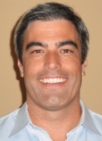 Toby
McAuliffe, Lead Account Manager for Windows Embedded US, Microsoft. Toby
McAuliffe, Lead Account Manager for Windows Embedded US, Microsoft.
Panelist
Bio: Toby McAuliffe is an 11
year veteran of Microsoft, spending time in multiple organizations during
his career. Starting as an Account Executive in the late 90’s, Toby has held
various roles mostly focused in Partner Management and Business Development.
After moving to the OEM Embedded Division in 2007, Toby started in the group
managing Microsoft’s partnership with one of North America’s largest
Distributors of Windows Embedded Licensing, and is now responsible for
managing the entire North American Indirect Sales team. Toby graduated from
North Carolina Wesleyan College, earning a BS degree double majoring in
Mathematics and Computer Science.
|
|
|
|
Panelist
MontaVista |
 James
Ready, CTO, MontaVista. James
Ready, CTO, MontaVista.
Panelist
Bio:
James Ready is the founder of
MontaVista software and a recognized authority in the embedded real-time
software industry. He developed the first commercially viable, real-time
operating system: VRTX kernel. He founded Ready Systems in 1980, which
merged with Microtec Research, went public in 1994, and was acquired by
Mentor Graphics in 1995. During this period, Mr. Ready served as president
of Ready Systems and as CTO of Microtec and Mentor. In 1999, Mr. Ready
founded MontaVista Software to bring the Linux operating system to the
embedded systems market. He earned a BA from the University of Illinois and
an MA from the University of California, Berkeley.
|
|
|
|
Intel |
 David
Stewart, Manager of the Embedded Linux Engineering team. David
Stewart, Manager of the Embedded Linux Engineering team.
Panelist
Bio: David Stewart is the
manager of the Embedded Linux Engineering team within the Open Source
Technology Center (OTC), part of the System Software Division of the
Software and Services Group (SSG) of Intel Corporation. Before the formation
of this team, David held a variety of software development management
positions in SSG and in Intel’s Desktop Boards and Systems division and
Server Products group. Prior to joining Intel in 1997, David held management
and engineering positions in consumer software products and operating system
development, including Sequent, Tektronix. David holds a BS and MS in
Computer Science from Colorado State University in Fort Collins, which he
received in 1983. David has given keynotes and presentations in over 40
technical conferences, and a series of popular technical videos on YouTube.
|
|
|
|
Panelist
Conexant
Systems, Inc. |
 Dr.
Shireesh Verma, Imaging and PC Media Group, Conexant
Systems, Inc. Dr.
Shireesh Verma, Imaging and PC Media Group, Conexant
Systems, Inc.
Panelist
Bio:
Shireesh Verma is
currently with Conexant Systems Inc. Prior to that he has held research and
development positions at Qualcomm Inc. and Marvell Semiconductor Inc.
He has been involved in extensive research on various aspects of
verification like, automatic generation and evaluation of functional and
syntactic coverage models, coverage feedback driven test generation,
behavioral error models, low power verification techniques, etc for the past
9 years. He obtained his PhD degree in Information and Computer
Science from the University of California Irvine. He has led several
in-house Design and Verification tool development efforts during his
industrial stints. He has published numerous conference papers, journal and
magazine articles and a book chapter. He has also delivered numerous invited
tutorials and has been invited at several panels in these areas. He
serves on the editorial board of Journal of Low Power Electronics (JOLPE).
He is also a member of the Accellera P1801 Low Power Working Group and the
IEEE Design Automation Standards Committee. He is a member of the Technical
Program Committees of "ACM/IEEE Design Automation and Test in Europe (DATE)
Conference", "IEEE International High Level design Validation and Test (HLDVT)
Workshop", and "International Symposium on Quality Electronic Design (ISQED)".
He is also a member of the organizing committee (Publicity chair) of the
HLDVT 2009.
|
|
| |
Panelist
Carbon Design Systems
|
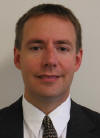 Bill
Neifert is the CTO and founder of Carbon Design Systems. Bill
Neifert is the CTO and founder of Carbon Design Systems.
Panelist
Bio: Bill Neifert is the CTO and founder of Carbon Design Systems.
Bill has 18 years of electronics engineering experience with more than 15
years in EDA including C-Level Design and Quickturn Systems where he managed
technical resources and sales engagements for the eastern half of the United
States. Bill started his career as an ASIC design and verification engineer
at Bull. Bill has a BS and MS in Computer Engineering from Boston
University.
|
|
| |
Panelist
Signum
Systems Corp.
|
 Robert
Chyla, VP of Research and Development, Signum Systems Corp. Robert
Chyla, VP of Research and Development, Signum Systems Corp.
Panelist
Bio: Robert Chyla joined the Signum Systems Inc. in USA in 1996. The
company founded in 1980 is a US-based maker of high-end JTAG and trace
emulation and debug tools. As VP of R&D Robert is responsible for SW
architecture and SW/HW interfacing of JTAG debugging and trace tools. He is
trying to advocate usage of high-end debug tools during development of
modern ARM-based embedded systems. Recently he is focusing on JTAG and trace
solutions for multi-core and embedded Linux systems. Before joining Signum
he was working as an assistant professor for few years and engaged into
high-end 3D graphics rendering software development with Japanese company
Integra Inc. He earned masters in Computer Science from Wroclaw Technical
University, Poland.
|
|
|
|
Lunch
|
Lunch
|
|
|
|
|
Green
Chips: Technologies, Tools, and Methodologies in Designing Ultra Low-Power
Multicore SoCs.
Track Chairman: Dr. Nader Bagherzadeh, Professor, Electrical
Engineering and Computer Science, UC Irvine. |
|
|
|
University
of California, Irvine |
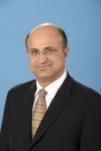 Dr.
Nader Bagherzadeh,
University of
California, Irvine. Dr.
Nader Bagherzadeh,
University of
California, Irvine.
General Purpose Processors (GP) vs.
Application Specific Processors (ASP), what is the future for multicore
designs with 1000's of IPs?
Abstract: In this talk first a
brief overview of multicore architectures is discussed. Next, the critical
issue of homogeneous versus heterogeneous processing nodes for the future
multicore architectures is analyzed, and areas that require further research
and development are identified. Finally. concluding remarks are made
regarding future designs.
Bio: Dr. Nader
Bagherzadeh has been involved in research and development in the areas of
computer architecture, reconfigurable computing, VLSI chip design, and
computer graphics. For almost ten years ago, he was the first researcher
working on the VLSI design of a Very Long Instruction Word (VLIW) processor.
Since then, he has been working on multithreaded superscalars and their
application to signal processing and general purpose computing. His
current project at UC, Irvine is concerned with the design of coarse grain
reconfigurable pixel processors for video applications. The proposed
architecture, called MorphoSys, is versatile enough to be used for digital
signal processing tasks such as the ones encountered in wireless
communications and sonar processing. DARPA and NSF fund the MorphoSys
project (total support $1.5 million). Dr. Bagherzadeh was the Chair of
Department of Electrical and Computer Engineering in the Henry Samueli
School of Engineering at University of California, Irvine. Before
joining UC, Irvine, from 1979 to 1984, he was a member of the technical
staff (MTS) at AT&T Bell Laboratories, developing the hardware and software
components of the next-generation digital switching systems (#5 ESS).
Dr. Bagherzadeh holds a Ph.D. in computer engineering from The University of
Texas at Austin. As a Professor, he has published more than a hundred
articles in peer-reviewed journals and conference papers in areas such as
advanced computer architecture, system software techniques, and high
performance algorithms. He has trained hundreds of students who have
assumed key positions in software and computer systems design companies in
the past twelve years. He has been a Principal Investigator (PI) or
Co-PI on more than $2.5 million worth of research grants for developing
next-generation computer systems for solving computationally intensive
applications related to signal and image processing.
|
|
|
|
ARM |
 Dr.
David Flynn, a Fellow in R&D at ARM Ltd. Dr.
David Flynn, a Fellow in R&D at ARM Ltd.
Practical state retention and power gating applied to SoC Subsystems.
Abstract: Power Gating
is now a well understood technique for reducing static leakage power when
circuits are idle. State Retention enhancements in hardware can address fast
wake-up latency and transparency to system software but have area,
performance and robustness/reliability impacts. This paper addresses
practical application of State Retention Power Gating, SRPG, applied to a
cached CPU subsystem – ARM1176JZFS case study. Multi-Voltage support in EDA
design flows now offered by power intent formats, UPF and CPF, address the
low level implementation challenges; the tutorial covers what matters from
the system and RTL designer perspective, and provides an in-depth view of
the realizable power savings - and verification implications. Real world
issues such as testability and retention state integrity are covered. The
case study covers silicon implementation and detailed evaluation at 65nm.
Conclusions are then drawn as to which techniques show the best promise for
minimal area/performance impact with maximal leakage power savings.
Table of Contents of the presentation: 65nm – performance/power trade-offs,
Low-power approaches – CPU and SOC, Low-power building blocks – physical IP,
CPU (ARM1176JZFSTM) power management, SoC low power diagnostics, Analysis
(Typical and Fast/Slow Silicon), Wake-up latencies, energy savings, What
would work even better? Q&A, Video demonstration silicon.
Bio: Dr David Flynn, a Fellow in R&D at ARM Ltd, has been with the
company since 1991, specializing in System-on-Chip IP deployment and
methodology. He is the original architect behind ARM's synthesizable CPU
family and the AMBA on-chip interconnect standard. His current research
focus is low-power system-level design. He holds a BSc in Computer Science
from Hatfield Polytechnic, UK and a Doctorate in Electronic Engineering from
Loughborough University, UK. He is currently part-time Visiting Professor
with the Electronics and Computer Science Department at Southampton
University, UK. David is a primary author of the Low Power Methodology
Manual co-developed with Synopsys and launched in 2007 and a contributing
author to the VMM-LP launched 2009.
|
|
|
|
Cavium
Networks |
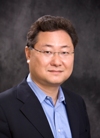 YJ
Kim, Senior Director, Embedded Processor Group. YJ
Kim, Senior Director, Embedded Processor Group.
Designing & Delivering
Powerful and Most Power Optimized Embedded Multi-core Processors.
Abstract: Massive
increases in network bandwidth and complexity are being driven by key new
trends including secure cloud computing architectures, 4G mobile internet
services, and IP video. These trends require next-generation multicore
processor SoC's to deliver dramatically higher compute and services
performance while maintaining very low power consumption and optimizing
application performance per Watt to minimize the operating costs of
datacenters, enterprise IT infrastructure, and service provider networks.
Cavium Networks will present its strategy to addressing these challenges,
highlighting an approach based on highly-efficient custom-designed general
purpose 64-bit MIPS processor cores complemented by targeted hardware
application acceleration for security, deep packet inspection, data
compression/decompression and de-duplication, storage, and packet
processing. Cavium will highlight how this approach is able to achieve up to
a 10X+ improvement in performance per Watt vs. general-purpose solutions and
will discuss how the same architecture and software can scale from very
low-cost to the industry's highest-end performance range. Additional
techniques for realtime dynamic power measurement will also be discussed.
Example applications and application performance will also be reviewed.
Bio: YJ Kim is Senior Director of the Embedded Processors Group at
Cavium Networks since June, 2006. YJ has 20 years of experience in
microprocessors. Prior to joining Cavium Networks, he held position as the
General Manager of Intel Tolapai (IA SOC – EP80579), Product Marketing
Manager of Intel Westport/IXP2350, co-founder/Director of API Networks, a
company with $230M revenue in 2000, Marketing Director at Samsung
Semiconductor, Inc and held various marketing positions at Intel x86
Microprocessor and FLASH groups. YJ holds B.S.E.E. and Master of Engineering
in E.E. from Cornell University, and has attended Wharton Executive Program
at University of Pennsylvania.
|
|
|
|
UC San
Diego |
 Houman
Homayoun, National Science Foundation Computing Innovation Postdoctoral
Fellow, UC San Diego. Houman
Homayoun, National Science Foundation Computing Innovation Postdoctoral
Fellow, UC San Diego.
TBA.
Abstract: TBA.
Bio: Houman Homayoun received
the PhD degree from the department of computer science at the University of
California Irvine in 2010. He named a 2010 National Science Foundation
Computing Innovation Fellow by the Computing Research Association (CRA) and
the Computing Community Consortium (CCC). He was a recipient of the 4-years
UC-Irvine computer science department chair fellowship. His research is on
power-temperature and reliability-aware memory and processor design
optimizations and spans the areas of computer architecture, circuit design
and VLSI-CAD, where he has published more than 30 technical papers on the
subject. His research is among the first in the field to address the
importance of cross-layer power and temperature optimization in memory
peripheral circuits. He received his BS degree in electrical engineering in
2003 from Sharif University of technology, Tehran, Iran. He received his MS
degree in computer engineering in 2005 from University of Victoria, Canada. |
|
|
|
STMicroelectronics |
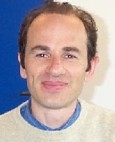 Marcello
Coppola, R&D Director. Marcello
Coppola, R&D Director.
Spidergon STNoC: a cost effective technology for Green SoC.
Abstract: Consumer electronics
(CEs) is mainly characterized by its heterogeneity in products and markets.
Moreover, large companies like Google, YouTube, Myspace, are revolutionizing
the way to provide information contents. Today, several new CE devices have
been introduced in the marketplace for receiving, visualizing,
communicating, creating, and sending information. This changing implies that
end-users are looking for devices with more features, better quality elegant
and simple user interface and longer battery life. This trend has a big
impact on the features that System-on-Chips (SoC) have to support and how
those features have to be implemented to be power efficient. In this talk,
we start to briefly introduce Spidergon STNoC technology. Spidergon STNoC is
the ST Network on Chip, built on ST’s existing on-chip communications
expertise while adding radical innovation derived from its research in
Network-on-Chip (NoC) technologies. Today Spidergon STNoC technology is a
configurable and extensible technology that provides an innovative on-chip
communication network able to address all requirements of new demanding
System-on-Chip (SoC) applications. Then, we will focus how the Spidergon low
power services and the associate design EDA flow is able to deliver
significant advantages to system designers in building green SoC by the
inherent cost-effectiveness in term silicon area, wiring complexity and
specific low power services. Finally some examples of Spidergon STNoC
instances in real SoC are given to the audience.
Bio: Marcello Coppola is
working for STmicroelectronics, he is Head of the Grenoble Research
Laboratory within “Advanced System Technology”, a corporate research
organization in ST. He studied computer science at Pisa University. In 1992,
he received his Laurea degree and started working at the Transputer
architecture group of INMOS, Bristol (UK). For 2 and half years he worked on
a research program regarding the architecture of the C104 router.
His research interests include several aspects of design technologies for
System on Chip, with particular emphasis to Network on Chip, MPSoC
architecture, Programming Modeling and system level design. His publication
record covers publications in the filed of simulation, modeling, SoC
architecture and on-chip communication network. He wrote chapters for
different books. He was one the members for the OSCI language working group.
He contributed to SystemC2.0 language definition and OSCI standardization.
He has chaired international conferences on SoC design and helped to
organize several others. He is program committee member of DATE, FDL,
CODES+ISSS, DAC. He is cited in Marquis “Who’s Who in Engineering” and IBC
biographies.
|
|
|
|
Micron
Technology, Inc. |
 Jim
Cooke, Sr. Manager, NAND Flash Marketing. Jim
Cooke, Sr. Manager, NAND Flash Marketing.
A New Breed of NAND Flash
Reduces Power and Simplifies Enterprise ASIC Designs.
Abstract: NAND flash
memory is not new to the enterprise storage market. However, traditional
NAND flash can present significant design challenges for the ASIC designer.
While good designers can address these challenges, solutions come at a price
of longer design times and larger gate counts due to the increased
complexity of the ASIC. In addition, a typical enterprise ASIC will can
waste hundreds of signals to control an array of traditional NAND devices.
Micron is offering a game changer with the development of a new class of
NAND flash devices that are designed specifically for enterprise markets.
These new devices will allow for more cost effective and higher performance
ASIC’s by saving hundreds of signals and potentially millions of logic gates
thereby reducing power.
Bio:
Jim Cooke
is a Sr. Manager for Micron’s NAND Flash marketing team. He has a BSEE from
the University of Massachusetts. Previously, he was responsible for managing
the applications engineering group at Micron. Jim has held similar
positions at Toshiba America Electronic Components. In addition, Jim has
over 20 years of hands-on systems-level design experience in embedded
applications and consumer markets.
|
|
|
|
Virage
Logic
Synopsys |
 Mike
Thompson, Director of Product Marketing for Processor and SoC Solutions. Mike
Thompson, Director of Product Marketing for Processor and SoC Solutions.
Effective Processing Solutions for Low-Power Heterogeneous Multiprocessing.
Abstract: Use of
Homogeneous multi-processing—multiple instances of the same CPU—in compute
engines for servers and workstations began in the 1990’s. By the mid-2000’s,
they began appearing in PCs and shipping in high-end consumer products. In
the system on-chip arena, homogenous multiprocessing began to appear in the
early part of this decade as a means of adding applications processors to
offload the host. This was necessitated by increasing processing
requirements appearing on embedded systems: phones that not only provided
voice but also handled instant messaging, full web browsing, video and still
camera, and even music playback. Other embedded applications likewise began
adding on functions that demanded increasing computational performance:
home-networking gear such as broadband gateways and Wi-Fi routers; storage
controllers for hard drives and Flash-memory drives; digital TVs, Blu-ray
Disc players, and set-top boxes; and ASICs for communications infrastructure
and enterprise routers. The impetus to multiprocessing was the limitations
encountered from simply increasing the clock rate of the host processor to
handle the continuous flow of new functions being added to the processing
task of these central hosts. The other compelling reason was to reduce the
escalating power consumption and heat resulting from the increase in the
clock frequency of the host processors. The simplest solution was to divide
the growing workload into smaller tasks that could be handled by multiple
processors that could be clocked at a lower frequency. To achieve real-time
processing results architects started segregated tasks to improve
predictability and performance. Early solutions saw collections of
homogeneous processors shouldering the load—the solution was less than
optimal since general purpose processors were not the most efficient at many
specific tasks: for example floating point processing needed to control
touch screen displays, or the signal processing essential for audio and
video encoding and decoding. Over the past few years this has been changing.
As the need for multiprocessing solutions has increased, the use of
homogeneous collections of processors has given way to the use of the
heterogeneous solutions that are common in most SoCs today. This is the
result of all of the issues discussed previously, but power has been the
biggest factor driving the use of heterogeneous architectures. This need for
power control is being driven by two fundamental challenges encountered in
building SoCs for today’s markets. That is, the need for long battery life
in portable devices and the need to control heating in all electronic
products. As we have followed Moore’s law down the process curve SoCs have
become increasingly more complex, but with this complexity has come greater
power dissipation. To control power dissipation and extend battery life
clock frequencies have to be limited, so the solutions have to be optimized
through the use of specialized processing engines that do more with fewer
clocks. Ironically, it is also the move to more advanced processes that has
enabled the use of these heterogeneous solutions that require more
transistors to implement. That is, as transistors have become cheaper
engineers are choosing to use more of them to implement heterogeneous
solutions with specialized resources that limit maximum clock frequencies to
control power consumption while doing the same or in many cases more work. A
significant shift has occurred over the past ten years in the type and
structure of the processing engines used on SoCs today. The homogeneous
processor implementations used in the early part of this decade have given
way to the use of specialized heterogeneous solutions to control power while
continuing to address the ever increasing performance needs of the market.
This trend will continue, enabling SoC designers to build the simplest to
the most complex heterogeneous SoCs for their customers using a broad range
of CPU IP, high speed memories and controllers, interface controllers and
PHYs, as well as the design libraries that enable access to the latest 65,
40, and 28 nm process technologies.
Bio: Mike Thompson is the Director of Product Marketing for Processor
and SoC Solutions at Virage Logic where he is responsible for the
development and infrastructure support of microprocessor cores and subsystem
IP. Mike has more than 30 years experience in both design and support of
microprocessors, microcontrollers, IP, and the development of embedded
applications and tools working previously for Actel, MIPS, ZiLOG, Philips/Signetics,
and AMD. He has a BSEE from Northern Illinois University and an MBA from
Santa Clara University.
|
|
|
|
5 Min
Afternoon Break |
5 Min
Afternoon Break
|
|
|
|
Panel
(FREE for Everyone!)
|
“Technology &
Entrepreneurship: Dreams, Realities & Opportunities”
Open To Everyone
|
|
| |
UC Irvine
STETINA BRUNDA GARRED & BRUCKER
Excalibur Engineering
Chapman University
Brandman University
Savant
Company Inc.
|

Dr. Goran Matijasevic, Executive Director, Chief Executive Roundtable, UC
Irvine.
Moderator
Bio:
Goran Matijasevic is Director of Research Development at The Henry Samueli
School of Engineering at UC Irvine. In this capacity, he works on formation
of new industry-university and academic collaborations, especially focusing
on new interdisciplinary research initiatives. Prior to this, he was the
Research Coordinator of the Integrated Nanosystems Research Facility at UC
Irvine, where he worked closely with industry partners on making them aware
of available university resources. Prior to UCI, he worked as a senior
engineer at QPlus, a telecommunications start-up company. From 1994 to 2001,
he was at Ormet Technologies, where as Director of Research he was working
on development of polymer and metal materials and structures for electrical
interconnect of high density circuits, new metal alloys for use in
conductive adhesives, materials for embedded passive components and heat
sensors, and high thermal efficiency electronic substrates. ¨He managed
multiple SBIR projects that led to several industry consortia projects, as
well as a license agreement with a Fortune 100 company. He has 4 U.S.
patents, 3 book chapters, and over 40 conference and journal publications
and has served on the NEMI Industry Roadmap committee. He served as
NanoWorld Conference Technical Chair, the Electronic Components and
Technology Conference (ECTC) Interconnect Chair and Emerging Technologies
Chair, the IEEE Sensors 2006 Local Chair, the ASME Frontiers in Biomedical
Devices Co-Char, as well as on the LARTA Tech Transfer Conference Organizing
Committee. He is currently on the OCTANe (Orange County Technology Action
Network) Operations Committee and Vice Chair of OC Innovation. Goran
received his PhD from UC Irvine in Electrical and Computer Engineering and
his MBA from Pepperdine University. He is also a member of the TriTech
Advisory Board, Southern California Biomedical Council Board, Tech Coast
Venture Network, IEEE, and ASME.
Panelist:
1. P. K. Shukla, Ph.D., CPIM, Vice
Chancellor for Entrepreneurship, Director, Leatherby Center for
Entrepreneurship and Business Ethics, Chapman University.
2. Eric Tanezaki, Intellectual Property
Law Partner, Stetina Brunda Garred & Brucker.
3. Susan R. Jones, Managing Director, Corporate Finance Associates.
4. Joe Hayashi, Founding Partner, Fortis
General Counsel.
5. Chris LaPlante, Founder/Owner, Excalibur Engineering.
6. TBA.
This Panel Is Open To
Everyone . . . Register for FREE Panel Pass
More Updates Coming
Soon . . .
Several Opportunities to Win
various Prizes During this Panel Discussion . . .
Don't Miss Out!
|
|
|
|
Stetina Brunda Garred &
Brucker |
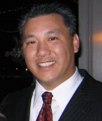 Eric
Tanezaki, Intellectual Property Law Partner, Stetina Brunda Garred & Brucker. Eric
Tanezaki, Intellectual Property Law Partner, Stetina Brunda Garred & Brucker.
Panelist
Eric is a partner of Stetina Brunda Garred & Brucker, a boutique full
service intellectual property law firm. He has represented numerous
companies in various industries in relation to patent, trademark and
copyright matters, seeking rights as well as related licensing. He received
his undergraduate engineering degree from the University of Southern
California, and his law degree from the McGeorge School of Law, University
of the Pacific. Prior to law school Eric worked in the aerospace industry.
Eric is the Executive Director of the Southern California Venture Network (SCVN.org).
In addition, Eric is the IP Law Mentor to the USC Stevens Institute for
Innovation.
|
|
|
|
Chapman University |
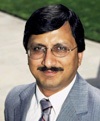 P.
K. Shukla, Ph.D., CPIM, Vice Chancellor for Entrepreneurship, Director,
Leatherby Center for Entrepreneurship and Business Ethics, Chapman
University. P.
K. Shukla, Ph.D., CPIM, Vice Chancellor for Entrepreneurship, Director,
Leatherby Center for Entrepreneurship and Business Ethics, Chapman
University.
Panelist
EDr. Shukla received a Master’s of Science degree from the
University of Southern California and his Ph. D. from the University of
California, Los Angeles. Dr. Shukla has a total of six university degrees.
He joined Chapman University in 1985 and is an Associate Professor of
Management. He has edited two published textbooks and has
presented/published several papers. His research focuses upon the
application of managerial and strategic decision-making tools. Since 2006,
he has served as Director of the Leatherby Center for Entrepreneurship and
Business Ethics within the Argyros School of Business and Economics. Dr.
Shukla has helped Chapman University students to win individual and team
regional, national, and global awards/finalist rankings in Entrepreneurship
& Business Plan Contests. The entrepreneurship program at Chapman University
is ranked #6 among undergraduate programs and #8 among graduate programs
nationally by The Princeton Review and Entrepreneur magazine out of 900
programs surveyed. Dr. Shukla received the 1st Place Best Faculty Advisor
Award from Collegiate Entrepreneurs’ Organization in 2006 out of all global
chapters. In 2008, he was selected to receive an Excellence in
Entrepreneurship Education Teaching Award from ACTON Foundation for
Entrepreneneurship Excellence to recognize the best entrepreneurship
instructors nationally. He has served as a Curriculum Study Guide Developer
and test writer for the “Economics and Entrepreneurship” section of the
United States Academic Decathlon. Dr. Shukla has consulted with
entrepreneurial firms at all stages--- business plan, inception, growth,
succession planning, going public, and liquidation.
|
|
|
|
Excalibur Engineering |
 Chris
LaPlante, Founder/Owner, Excalibur Engineering. Chris
LaPlante, Founder/Owner, Excalibur Engineering.
Panelist
TBA.
|
|
|
|
|
Open To Everyone
Reception
&
Networking
|
|
|
|
|
8th
International SoC Conference Closed.
|
|
|
|
|
|
|
* Program is subject to change.
Savant Company Inc. reserves the right to revise or modify the above program at
its sole discretion.
Copyright © 2003-2010 by Savant Company Inc. All
Worldwide Rights Reserved.
Wafer images courtesy of Intel Corporation, Micron Technologies & Altera Corporation.
| |
|